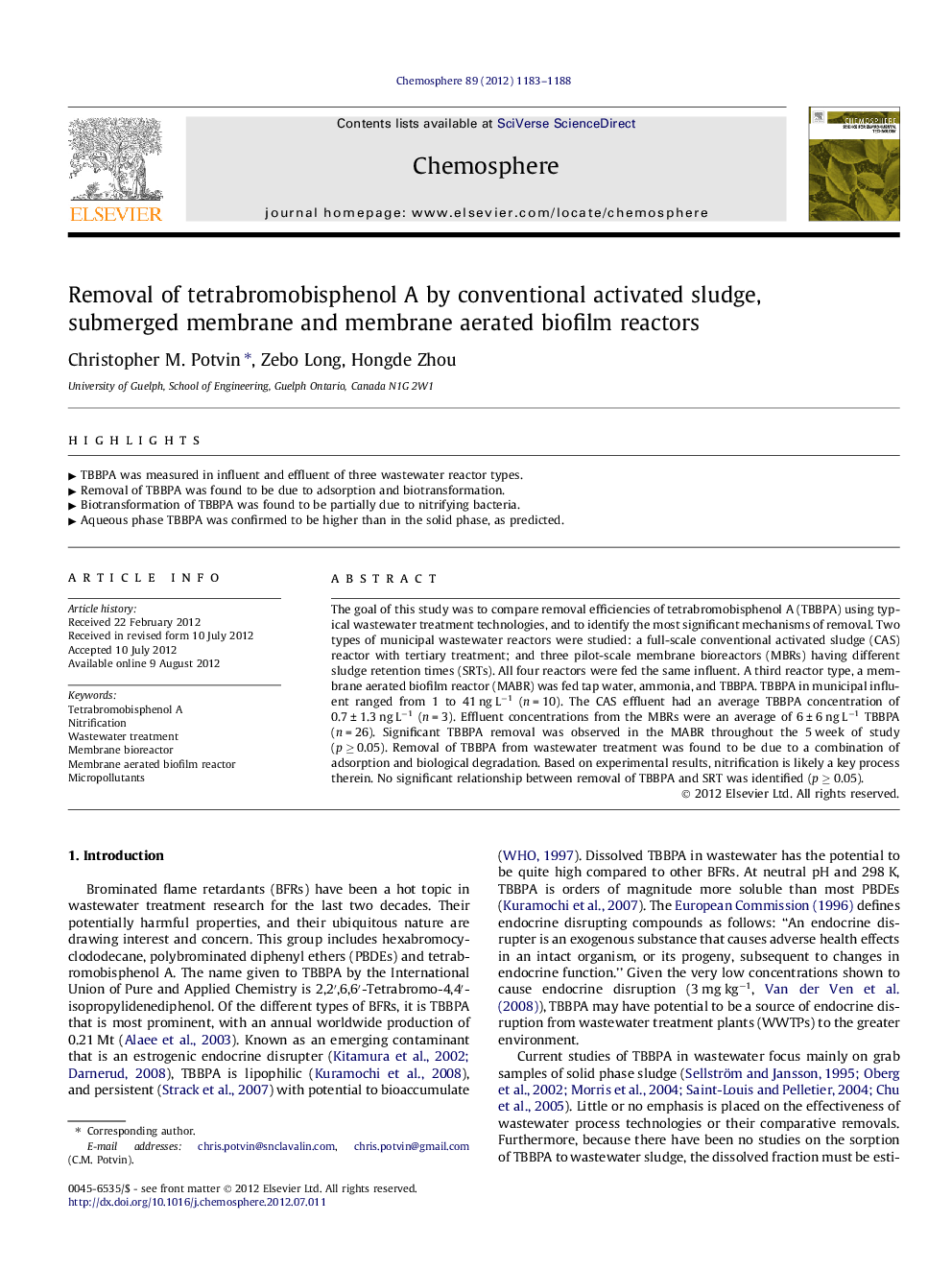| Article ID | Journal | Published Year | Pages | File Type |
|---|---|---|---|---|
| 4409884 | Chemosphere | 2012 | 6 Pages |
The goal of this study was to compare removal efficiencies of tetrabromobisphenol A (TBBPA) using typical wastewater treatment technologies, and to identify the most significant mechanisms of removal. Two types of municipal wastewater reactors were studied: a full-scale conventional activated sludge (CAS) reactor with tertiary treatment; and three pilot-scale membrane bioreactors (MBRs) having different sludge retention times (SRTs). All four reactors were fed the same influent. A third reactor type, a membrane aerated biofilm reactor (MABR) was fed tap water, ammonia, and TBBPA. TBBPA in municipal influent ranged from 1 to 41 ng L−1 (n = 10). The CAS effluent had an average TBBPA concentration of 0.7 ± 1.3 ng L−1 (n = 3). Effluent concentrations from the MBRs were an average of 6 ± 6 ng L−1 TBBPA (n = 26). Significant TBBPA removal was observed in the MABR throughout the 5 week of study (p ⩾ 0.05). Removal of TBBPA from wastewater treatment was found to be due to a combination of adsorption and biological degradation. Based on experimental results, nitrification is likely a key process therein. No significant relationship between removal of TBBPA and SRT was identified (p ⩾ 0.05).
► TBBPA was measured in influent and effluent of three wastewater reactor types. ► Removal of TBBPA was found to be due to adsorption and biotransformation. ► Biotransformation of TBBPA was found to be partially due to nitrifying bacteria. ► Aqueous phase TBBPA was confirmed to be higher than in the solid phase, as predicted.
